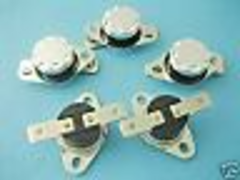
Fan Control
adrianreeve - 13/8/09 at 06:03 AM
What have people done - used the fan switch in the rad to turn the fan on and off, or used their engine ecu to control it?
Thoughts please,
Adrian
flak monkey - 13/8/09 at 06:06 AM
With the pinto I have a manual fan switch.
With the Duratec it will be controlled via the megasquirt ECU
David
Flamez - 13/8/09 at 06:32 AM
I have used the bike thermo switch and ecu to control fans.
kj - 13/8/09 at 07:01 AM
I made a housing to go between the pipes on the top hose and fitted a one from a ford focus, cuts in at 92 off @86.
Cost £1 for the nut and £8 for the thermo switch.
James - 13/8/09 at 09:20 AM
Fan switch in the rad. I would probably still use this even if I had an ECU! 
I also have a manual switch to turn. Mainly because everyone else has one and I felt inadequate! 
I actually think it's pointless as you have a thermostat.
Where it was useful was that after removing the scuttle panel, whilst sitting it traffic in November, I could turn the fan on and get warm air blowing
over me! lol!
Cheers,
James
pewe - 13/8/09 at 11:09 AM
My cooling (Polo rad) must be a bit marginal as it started to flash the warning light whilst stuck in traffic the other day.
Unexpected benefit of the manual over-ride switch was that having pulled over I lost only about ten minutes. By stopping the engine then operating the
fan for a few minutes followed by cranking the engine over to circulate another load of hot water into the rad I only needed three burst to get the
temp back down.
Cheers, Pewe 
irvined - 13/8/09 at 11:11 AM
I use the thermostatic switch in the thermostat housing to control the fan (as opposed to the switch in the radiator.) as I reasoned that I wanted to
switch the fan on when the engine got to 100C not when the temperature in the radiator got that high.
As I worry about overheating, and the car does get very hot very quickly, I have a manual override which I can use to switch the fan on if I so wish.
I use this less and less now I trust the cooling system, however it does give me a lot of peace of mind.
On the fury I will use the ECU to control the fan, but keep the override switch.
Ivan - 13/8/09 at 11:26 AM
A manual switch is useful on track days as you can use it on the cooling down lap to get the temp below normal to mitigate against heat sink
overheating in the pits.
eznfrank - 13/8/09 at 11:37 AM
Rad switch with manual dash button overide for me
britishtrident - 13/8/09 at 04:47 PM
The basic temperatures that have to be controlled are
(1) Coolant Temperature at exit from the cylinder head ie at engine side of thermostat.
(2) Coolant Temperature at exit from radiator
In addition it is a good idea to control
(3) oil temp
(4) Underbonnet temp.
The control of the temperature as it flows out the engine and the by-pass temperature should be down to the thermostat. An 88 degree thermostat will
only start to open at 88cand be fully open by 92c a 91c stat will only open fully at 95c. For the thermostat properly to work it needs a by-pass
circuit.
The control of the coolant temperature at the radiator outlet is down to the fan alone, if you haven't got a fan switch in the rad itself then
putting a switch the operates at a low temperature (ie for example 87c on 82c off) in the hose between radiator and water pump is a very good option.
If you fit a fan switch in this position ideally wire it so the switch hhas power even with the ignition off.
If you put a switch in the top hose then it should be a higher temperature type (for example 100c on/95c off for an engine with a 91c thermostat or
on 97c / 85c off for an engine with an 88c thermostat) , if you fit the switch in the top hose then I would advise drilling a couple of small
holes in the thermostat and wiring the fan through the ignition switch.
Water boils at about 115c to 120c at cooling system pressure so as long as no point of the system goes much above 105c for a modern engine it
isn't in an over heat situation.
There is no reason why you can't wire the fan through more than one switch in parallel so you can put a switches working on oil temperature
or under body temperature or a manual switch.
If you wire the stitch through a relay you can use these they are as cheap as chips and are available in various temperatures from 40c to 130c and
can be easily bolted to a metal surface. You can also get tiny flat types that could be inserted between the fins on the radiator.
[Edited on 13/8/09 by britishtrident]
[Edited on 13/8/09 by britishtrident]
[Edited on 13/8/09 by britishtrident]


Rescued attachment 4.jpg





